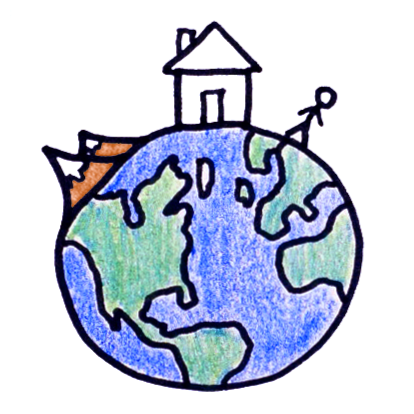2016-03-28
[public] 1.16M views, 19.6K likes, dislikes audio only
A big thank you to our supporters on https://www.patreon.com/MinuteEarth :
- Today I Found Out
- Maarten Bremer
- Jeff Straathof
- Mark Roth
- Tony Fadell
- Muhammad Shifaz
- 靛蓝字幕组
- Maletendo Bezenga
- Kapero
- Candy
- Zarko Obrenovic
- Duhilio Patiño
- Alberto Bortoni
- Valentin
- Nicholas Buckendorf
- Antoine Coeur
___________________________________________
Want to learn more? Here are some keywords to get your googling started:
Cambrian Period – Geologists cut the past up into segments. The Cambrian is a geologic "period" that lasted from 570-505 million years ago.
Ordovician Period – The geologic period that followed the Cambrian and lasted from 505 million years ago to about 440 million years ago.
Cambrian Explosion of Life – The evolutionary event (during the Cambrian period) in which the first marine animals diversified into all kinds of different forms. All of the basic body plans – like segmented/non-segmented, asymmetric/symmetric, radial/bilateral – emerged during this time.
Great Ordovocian Biodiversification Event (GOBE) – Another big evolutionary event that happened about 40 million years after the Cambrian explosion. Often described as a "filling out" of the taxonomic tree, whose main branches sprouted during the Cambrian.
Late-Ordovician Extinction – The major mass extinction event at the end of the Ordovician period. Considered by most paleontologists to be one of the 5 biggest mass extinctions since animals first evolved on Earth.
Hirnantian Extinction – Another term for the Ordovician Extinction. "Hirnantian" refers to the layers of rock (the "stratigraphic sequence") that were laid down during a short span of time at the end of the Ordovician. (Geologists break up the stratigraphic record into small chunks called "stages." The Hirnantian is one stage.)
Glacial Striations – The parallel scratches in bedrock made as a glacier moves over its surface (the scratches are actually made, not by the ice itself, but by rocks stuck to the bottom of the glacier)
Glacial Moraine – The big pile of soil and rocks that glaciers push in front of them as they move. (Note: technically, this is called a "terminal moraine." There are also "medial" and "lateral" moraines that run along the length of glaciers).
Glacial Till – The debris dropped by a glacier/ice sheet when it melts. Usually a big pile of all sizes of rocks, from sand and mud to boulders.
Animal of the Ordovician – All the animals still lived in the oceans at this point in Earth's history. Some of the major groups include coral (tabulate and rugose), brachiopods, trilobites, graptolites, and conodonts.
___________________________________________
Credits (and Twitter handles):
Script Writer: Emily Elert (@eelert)
Script Editor: Kate Yoshida (@KateYoshida)
Video Illustrator: Ever Salazar (@eversalazar)
Video Director: Emily Elert (@eelert)
With Contributions From: Henry Reich (@minutephysics), Alex Reich (@alexhreich), David GoldenBerg, Rachel Becker and Peter Reich
Music by: Nathaniel Schroeder: http://www.soundcloud.com/drschroeder
_________________________________________
Like our videos?
Subscribe to MinuteEarth on YouTube: http://goo.gl/EpIDGd
Get early access to all of our videos on Vessel: https://goo.gl/hgD1iJ
Support us on Patreon: https://goo.gl/ZVgLQZ
Also, say hello on:
Facebook: http://goo.gl/FpAvo6
Twitter: http://goo.gl/Y1aWVC
And find us on itunes: https://goo.gl/sfwS6n
________________________
Image Credits: Ordovician Glacial Striations – Flickr user Sebastian Luening
References:
Dowdeswell, J. A., Ottesen, D., Rise, L., & Craig, J. (2007). Identification and preservation of landforms diagnostic of past ice-sheet activity on continental shelves from three-dimensional seismic evidence. Geol Geology, 35(4), 359.
Ghienne, J. et al (2014). A Cenozoic-style scenario for the end-Ordovician glaciation. Nature Communications Nat Comms, 5, 4485.
Harper, D. A., Hammarlund, E. U., & Rasmussen, C. M. (2014). End Ordovician extinctions: A coincidence of causes. Gondwana Research, 25(4), 1294-1307.
Heron, D. L., & Craig, J. (2008). First-order reconstructions of a Late Ordovician Saharan ice sheet. Journal of the Geological Society, 165(1), 19-29.
Heron, D. P., & Howard, J. (2010). Evidence for Late Ordovician glaciation of Al Kufrah Basin, Libya. Journal of African Earth Sciences, 58(2), 354-364.
Krug, A. Z., & Patzkowsky, M. E. (2004). Rapid recovery from the Late Ordovician mass extinction. Proceedings of the National Academy of Sciences, 101(51), 17605-17610.
/youtube/video/wvapNVTvuuw
https://www.patreon.com/minuteearth
/youtube/channel/UCeiYXex_fwgYDonaTcSIk6w
https://www.patreon.com/minuteearth
/youtube/video/4DF94Wvtekk

